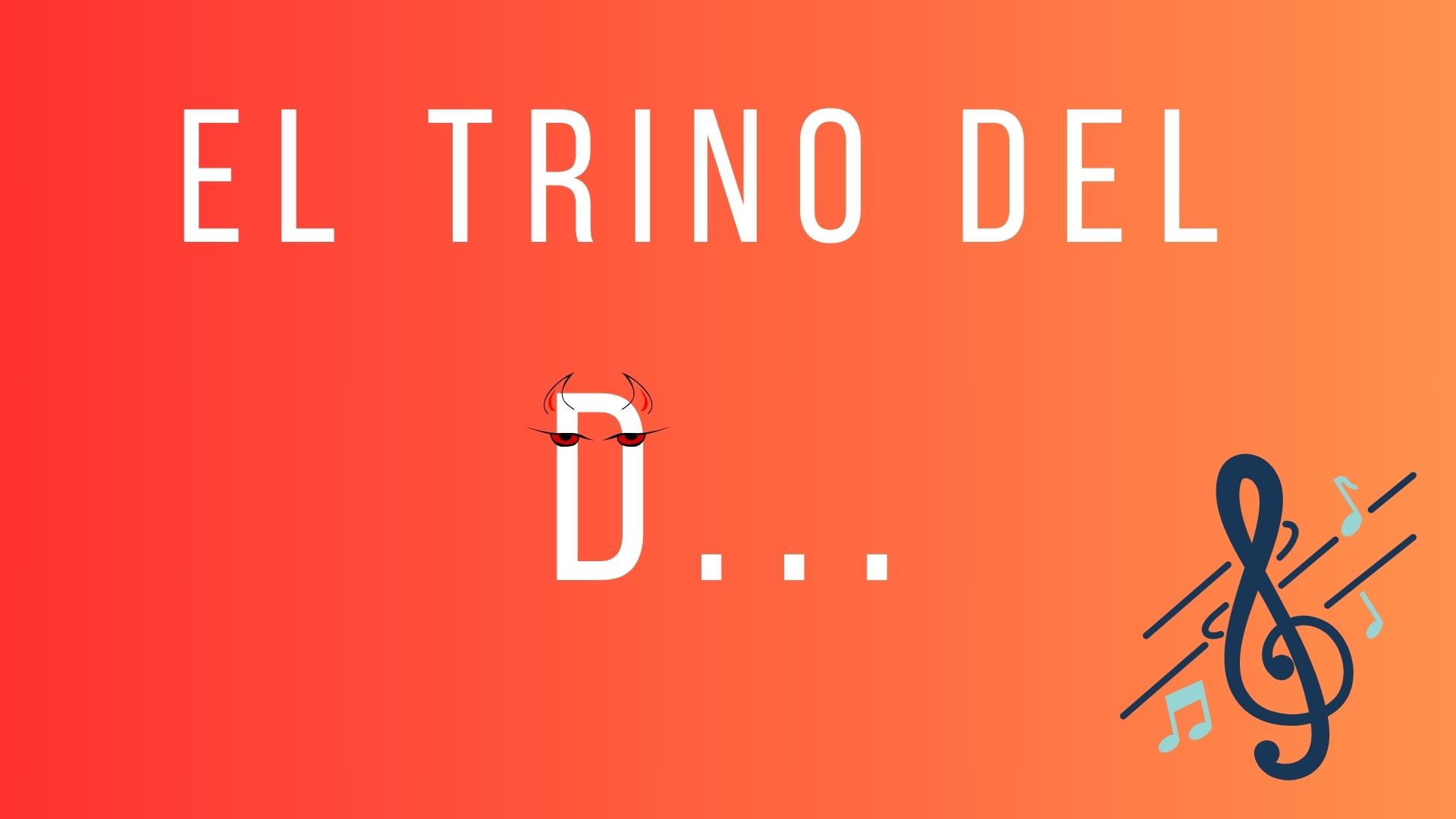¿Conocías el Tritono del Diablo? | El mejor recurso de la música | by nazatpt

Un momento no se asusten. No es ningún pacto satánico, solo es música. Hoy aprenderemos cuál es el Tritono del diablo. Pero primero, una clase rápida de intervalos.
El intervalo es simplemente la distancia que hay entre una nota y otra, en un sistema diatónico los intervalos estarán regidos por una estructura. Éstos se comprenderían en intervalos de segunda, tercera, cuarta, quinta, sexta, octava, etc.
Cada uno de ellos tendrá un apellido dependiendo la alteración que tengan. Existen intervalos de Segunda mayor y segunda menor, de terceras mayor y terceras menor, de cuartas justas o disminuidas o aumentadas, y así sucesivamente con todos. Pero esa explicación la veremos quizás para otro post.
Wait a minute, don't panic. It's not a satanic pact, it's just music. Today we'll learn what the Devil's Tritone is. But first, a quick lesson on intervals.
The interval is simply the distance between one note and another, in a diatonic system the intervals will be governed by a structure. These would be comprised of intervals of second, third, fourth, fifth, sixth, octave, and so on.
Each of them will have a last name depending on the alteration they have. There are intervals of major second and minor second, of major thirds and minor thirds, of just or diminished or augmented fourths, and so on with all of them. But we will see that explanation perhaps for another post.
Solo quería que supieran que el intervalo es la medida que se usa para saber la distancia de las notas. Por ende un Tono está compuesto de intervalos.
Ahora me explico, imaginen que tienen la nota Do y quieren obtener la nota Reb.
I just wanted to let you know that the interval is the measure used to know the distance of the notes. Therefore a Tone is composed of intervals.
Now let me explain, imagine that you have the note C and you want to get the note Reb.

Pues suben un semitono a ese Do y obtienen un Re bemol. Eso es un intervalo de Segunda menor. Ahora bien, para obtener un intervalo de segunda mayor, tendríamos que tener un tono completo, en vez de solamente un semitono. ¿Qué hacemos?. Pues agregamos otro semitono, y ahora en vez de ser Reb sería Re natural.
So they go up a semitone to that C and they get a D flat. That's a minor second interval. Now, to get a Major Second interval, we would have to have a whole tone, instead of just a semitone. What do we do? Well, we add another semitone, and now instead of being Db, it would be D

Perfecto, ahora tenemos un intervalo de segunda mayor. De do a Re hay un Tono de distancia. Un Tono es un intervalo que está compuesto por dos semitonos. El tono entre Do y Re está compuesto por Do natural y Do# (O Re bemol).
¿Qué tiene que ver esto con los tritonos?. Pues los tritonos es un intervalo que se compone por tres tonos enteros. Ya sabemos que los tonos están compuestos por dos semitonos. Pues bien, vámonos a la escala mayor.
Perfect, now we have a major second interval. From C to D there is a Tone distance. A Tone is an interval that is composed of two semitones. The tone between C and D is made up of C and C# (or D flat).
What does this have to do with tritones? Well, tritone is an interval that is made up of three whole tones. We already know that tones are made up of two semitones. Well, let's go to the major scale

Ok, detengámonos en el Fa, contemos desde el Do al Fa a ver cuántos tonos hay. Muy bien, de Do a Re hay un Tono, de Re a Mi hay otro tono, ya van dos tonos, pero de Mi a Fa hay un semitono. Quiere decir que tenemos dos tonos y medio (2T y 1/2).
Para obtener los tres tonos debemos hacer que entre el Mi y el Fa haya un tono Completo. Para lograrlo le colocaremos un Sostenido al Fa (el sostenido aumenta el valor de la nota un semitono).
Ok, let's stop at F, let's count from C to F and see how many tones there are. Very well, from C to D there is a tone, from D to E there is another tone, that's two tones, but from E to F there is a semitone. This means that we have two and a half tones (2T and 1/2).
To obtain the three tones we must make that between the E and the F there is a whole tone. To achieve this we place a sharp on the F (the sharp increases the value of the note by a semitone).

Perfecto, hemos conseguido tres tonos enteros entre el Do y el Fa#. Como consecuencia de ello también conseguimos el temible Tritono del diablo. Su nombre tan peculiar viene de la edad media, ya que en aquel entonces se evitaba usarlo por la disonancia que generaba. Lo curioso de la historia, es que en éstos días ese tritono es un recurso muy usado. Sobre todo cuando se ejecutan acordes dominante como C7.
Veamos la estructura de C7: C - E - G - Bb. Muy bien, ahora observemos la distancia que hay entre el E y el Bb.
Perfect, we got three whole tones between C and F#. As a consequence we also get the dreaded Devil's Tritone. Its peculiar name comes from the Middle Ages, since at that time it was avoided because of the dissonance it generated. The curious thing about the story is that nowadays this tritone is a very used resource. Especially when playing dominant chords like C7.
Let's see the structure of C7: C - E - G - Bb. All right, now let's look at the distance between E and Bb.

Sabiendo que dos semitonos forman un tono, podemos observar que entre el Mi y el Si bemol hay tres tonos enteros de distancia. Por consiguiente, el acorde de C7 tiene entre sus notas un Tritono.
Como ya saben, los acordes con séptima dominante, son acordes que generan tensión y hacen un llamado a la resolución del mismo. El tritono es un recurso muy utilizado para dar otros colores a las composiciones, es un recurso armónico muy interesante y que quizás hayas usado sin darte cuenta.
Es un recurso muy usado en el bebop y jazz, en la escala de blues también, podemos observar que la escala de blues tiene su 5ta disminuida, eso hace que entre la tónica y el quinto grado disminuido haya un tritono.
Knowing that two semitones form a tone, we can observe that between the E and the B flat there are three whole tones of distance. Therefore, the C7 chord has between its notes a Tritone.
As you already know, the chords with dominant seventh are chords that generate tension and make a call to the resolution of the same. The tritone is a very used resource to give other colors to the compositions, it is a very interesting harmonic resource and that perhaps you have used without realizing it.
It is a very used resource in bebop and jazz, in the blues scale also, we can observe that the blues scale has its diminished 5th, that makes that between the tonic and the diminished fifth degree there is a tritone.

Para finalizar amigos, debo agradecer infinitamente a mi gran amigo @juliopalomo por incentivarme a participar en el Jamming Session de cada semana, eso me ha motivado a seguir estudiando y aprendiendo mucho más acerca de la armonía y la música en general.
Espero a ustedes también les haya servido mucho ésta información.
Finally friends, I must infinitely thank my great friend @juliopalomo for encouraging me to participate in the weekly Jamming Session, that has motivated me to continue studying and learning much more about harmony and music in general.
I hope this information has been very useful for you too.

Imagen editada en Canva Editor


Maravilloso contenido hermano. Muy educativo y además un recurso valioso en la armonía moderna. Tu reflexión estoy seguro que será de gran utilidad para todos los que estudian música o están entrando en el mundo de la armonía. Un gran abrazo👐
Un gran abrazo igualmente hermano querido!!. Ésta tema de la armonía me está llegando a apasionar bastante, ciertamente es muy compleja y extensa, pero poco a poco voy añadiendo más conocimientos al baúl. Gracias por pasar por acá hermano!!.